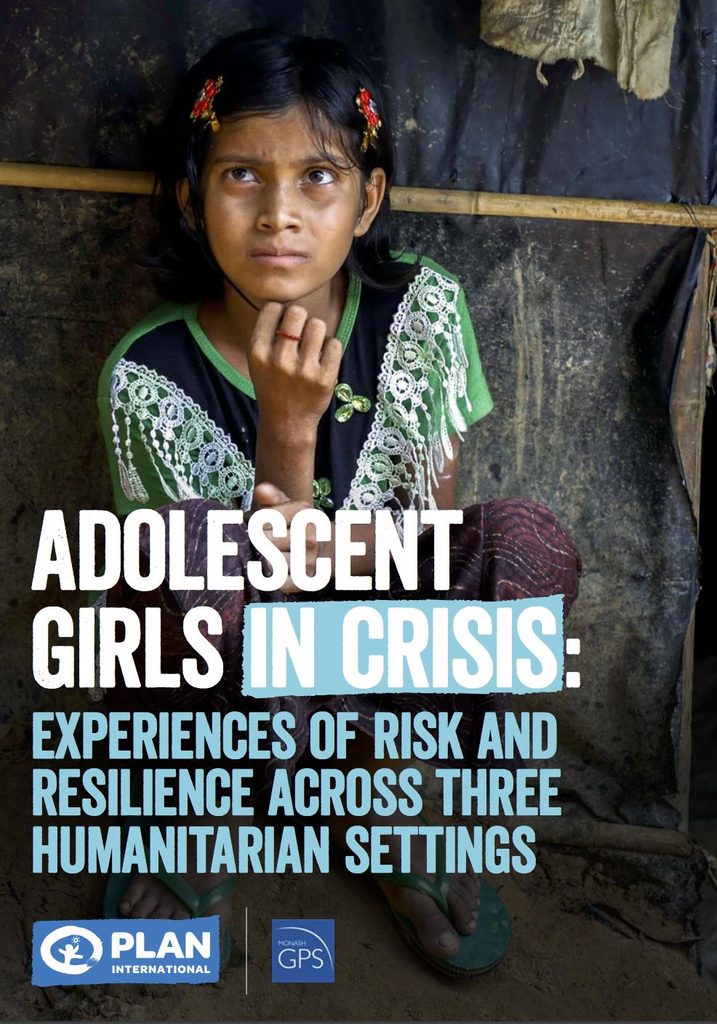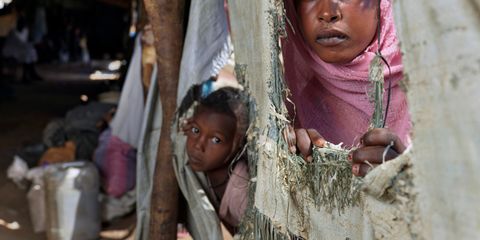Adolescent Girls in Crisis
20 September 2018The Adolescent Girls in Crisis research is drawn directly from the voices and experiences of girls in three of the world’s most troubled and volatile locations: South Sudan, the Lake Chad Basin and the Rohingya refugee camps in Bangladesh.

The Adolescent Girls in Crisis research is drawn directly from the voices and experiences of girls in three of the world’s most troubled and volatile locations: South Sudan, the Lake Chad Basin and the Rohingya refugee camps in Bangladesh.
Adolescent girls living through these long-term crises face particular challenges in different locations. However, their lives and experiences also give us significant insights into the risks encountered and the courage shown by girls and young women dealing with similar situations all over the world.
The report presents findings and recommendations that will help to support girls facing the toughest, long-term crises, wherever they are.
Summary of findings and recommendations
The research found that:
Girls live in fear
Adolescent girls told us of the fear caused not only by the constant presence of armed men, but about genderbased violence within families, including child, early and forced marriage, which puts their health, their education and general well-being at risk.
Girls’ lives are restricted
Adolescent girls lack freedom of movement: over protective parents, a heightened fear of violence and increased domestic chores confine them to the home and severely limit their opportunities. Adolescent girls cannot go to school, they cannot make friends and they cannot contact health services.
Girls want to go to school
Adolescent girls everywhere express a passion for study and a disappointment that their current situation, often combined with pre-existing discrimination, prevents them from attending school or gaining access to vocational training. Fear keeps them at home, as does family poverty, but often also there are no schools or training centres for them to go to, they are too far away or they have missed so much education that they struggle to catch up.
Girls struggle to stay healthy, mentally and physically
Adolescent girls lack proper nutrition, have little or no access to information about sexual and reproductive health, and, particularly in the area of mental health, have extremely restricted access to health services. All of which will have a long term destructive impact on their lives.
Girls want more control and power over their lives
The inability to control their lives to be consulted about decisions that affect them is reflected on by adolescent girls in all three research areas: adolescent girls cannot choose to carry on with their education, or whether, when or whom to marry, nor are they able to pursue livelihood opportunities that might give them a measure of independence.
What needs to be done
The following recommendations are based on what adolescent girls have told us about their experiences
and their priorities for the future:
- Increase participation of adolescent girls in decision-making.
- Ensure adolescent girls’ education does not suffer.
- Prioritise provision of adolescent girl-friendly health information and services, to include mental health issues and sexual and reproductive health and rights.
- Tackle gender-based violence in all its forms to improve security for adolescent girls.
Download options
report (english)
1.54 mb
report (francais)
1.59 mb
Categories: Emergencies

